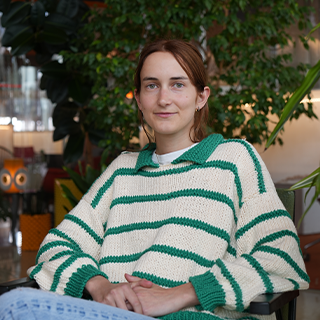Denmark has a new political party led by an AI chatbot
Of all the problems that artificial intelligence (AI) has been harnessed to solve, the complex and oftentimes messy terrain of human political affairs is one that has always been considered to go beyond its scope of application. That is, up until now…
Founded in May 2022 by the art collective Computer Lars and the non-profit art-technology organisation MindFuture Foundation, let me introduce you to Denmark’s new AI-led political party, the Synthetic Party.
Its artificially intelligent representative, known as Leader Lars, is programmed on the policies of Danish fringe parties since 1970 and is meant to represent the values of the 20 per cent of Danes who did not vote in the previous 2019 election.
Aiming to be the “last new party” in the country, the Synthetic Party is breaking ground by deriving its policies entirely using its AI chatbot. In the past, we’ve seen similar technology being leveraged in more ‘trivial’ contexts such as helping users practice their sexting skills or chatting with Kpop fans by pretending to be their favourite idols.
Meanwhile, Leader Lars is hoping to stand in Denmark’s next general election in 2023. For Asker Bryld Staunaes, one of the founding members of the Computer Lars collective, the Synthetic Party represents “the political vision of the common person.”
The motivation is to “take AI into the human realm of debate and discourse,” Bryld Staunaes told TRT World. He further noted that, prior to the Synthetic Party, there has been no way to concretely address humans and AI within a democratic context.
But there’s more to the party than Leader Lars. Individuals wishing to learn more about the controversial party’s vision can interact with the Synthetic Party’s AI on Discord via chatbots. There, they can meet the figurehead Leader Lars as well as the party secretary Computer Lars, and even the chatbot incarnation of all the party’s members.
“Computer Lars curates the Discord server to educate people on how to use the AI as a means of political exploration,” Bryld Staunaes explained. “It can tell us quite a lot about the political vision and discourse of normal people.”
“On Discord, we have this political development that primarily focuses on making the AI responsible and accountable for the power it already exercises,” he continued. “It tries to widen the imaginary on how we can work together in a better way.”
It’s no surprise why the Synthetic Party—one of over 230 ‘micro-parties’ created in Denmark over the years—seems worrying and even scary to some citizens. With more and more occurrences depicting AI in a negative light across countless aspects of our lives, it makes sense that a non-human entity having a say in a country’s politics is seen as a cause for concern by many.
And yet, Bryld Staunaes believes it is a challenge that can ultimately be overcome. It might surprise you to hear that the Synthetic Party isn’t the first time AI has been used in the political realm. In 2018, an AI candidate stood for mayoral elections in Japan. That same year, a Russian chatbot called Alisa ran against Vladimir Putin in the 2018 presidential elections. Then in 2020, Sam, a virtual politician, stood for the elections in New Zealand.
That being said, all of these cases were limited to digital avatars of a politician—the Synthetic Party attempts to go further in examining how AI can function in a political system.
Whether the party gains a footing with the public to actually be included in next year’s poll remains unclear. In Denmark, a party needs 20,182 signatures to stand in the parliamentary election—official data highlighted by TRT World shows that the Synthetic Party has just four at the moment.
However, if it does happen to win a parliamentary seat, the party has announced that it will use its mandate to appoint a representative in charge of ensuring a link between AI and the debates organised in parliament.






